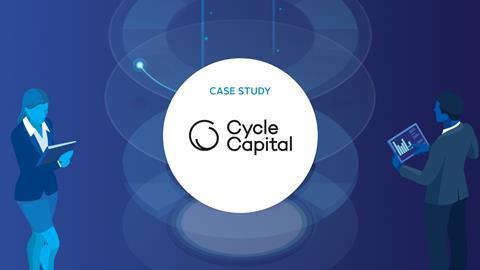Signatory type: Investment manager
HQ country: Canada
Cycle Capital is a cleantech venture capital investment manager. We invest in growing companies that have developed technologies aiming to reduce greenhouse gas (GHG) emissions and optimise resource use at the individual level and in industrial processes.
Why we developed a strategy to measure GHG emissions
Given the current environmental challenges facing society, we believe that it is crucial to precisely assess and quantify the impact – positive or negative – that we and our investees can have on climate change.
We carefully select and analyse our potential investees on a number of criteria, including the quality of their clean technology value proposition and overall environmental impact thesis. But we felt we needed to go further in this assessment. Additionally, our LPs are asking for more detailed ESG and impact data, concerning our firm and our portfolio companies.
The start-up companies we invest in develop clean and innovative technologies, such as designing software that enables energy savings in industrial facilities or manufacturing efficient and robust electric vehicle chargers for commercial fleets.
Those companies know they are solving a challenge that has a positive environmental impact, but they do not always know how to precisely measure and quantify their impact. They do not have dedicated human and financial resources to lead this measurement.
Most of our investees would affirm that their technologies make it possible to reduce and/or avoid GHG emissions but it can be challenging for them to provide precise GHG emissions data. That led us to conclude that if we wanted to have this data available for our investees, we would have to support them in accessing it.
The GHG emissions measurement strategy that we are implementing enables us to take better and more informed investment decisions, to precisely quantify the impact of our portfolio, and eventually to support our investees in enhancing their positive impact. Consequently, we can better report to our stakeholders on precise impact data points.
How we measure GHG emissions
We decided to make it a condition of our investment that investees undergo a carbon footprint assessment covering scope 1, 2 and 3, as well as a GHG-avoided emissions assessment. Making it mandatory demonstrated that impact measurement really matters to us and to our LPs. It also underlines that we consider impact an important part of a company’s value creation.
Therefore, every company we invest in goes through those assessments in the months following the closing of the investment. We chose to partner with a third-party assessment firm that can support investees in collecting the right data and making the right assumptions, to have the most accurate results.
GHG-avoided emissions are especially sensitive to gauge because the calculation relies on companies’ projections and assumptions. These must be chosen in a rigorous and conservative manner for the results to be relevant. This is also why we work with a firm whose methodology follows the GHG Protocol and the ISO 14064 norm.
In addition to the GHG emissions metrics, every portfolio company goes through a thorough impact assessment covering the five dimensions developed by Impact Management Project (what, who, how much, contribution and risk). We analyse the contribution of every company to the UN Sustainable Development Goals, and we use the GIIN IRIS+ framework to select metrics that enable us to monitor the impact of each company.
Example
In 2019, we closed the fundraising of our C$145m Fund IV – the first fund with formal impact measurement commitments, and in 2021, we assessed the five companies in our portfolio:
- Carbon footprint assessment: We analysed each company’s GHG emissions in Scope 1, 2 and 3 categories, based on ISO 14064-1 guidance and the GHG Protocol. We found that in 2020, the cumulative GHG emissions of our portfolio companies was equivalent to 536 tonnes of CO2. For four out of five companies, more than 50% of those emissions are classified as Scope 3. This is a category of emissions that is sometimes forgotten, given that it refers to those linked to purchased goods and services. Scope 3 emissions occur along a value chain, both upstream with suppliers and downstream with customers. They can be difficult to measure, but in some cases account for most of a company’s emissions, so it is key to quantify them to reduce a company’s carbon footprint.
- GHG avoided emissions assessment: We used ISO 14064-2 guidance to quantify avoided GHG emissions and found that in 2020, our portfolio companies were projected to have helped avoid emissions equivalent to 7,717 tonnes of CO2. We used development projections to estimate that in 2023, those five companies will help to avoid emissions equivalent to around 36,000 tonnes of CO2. These numbers are interesting as they can quantify one aspect of the environmental impact our portfolio companies’ technologies have.
These assessments help us have a more precise and detailed overview of the direct and indirect environmental impacts of our portfolio.










